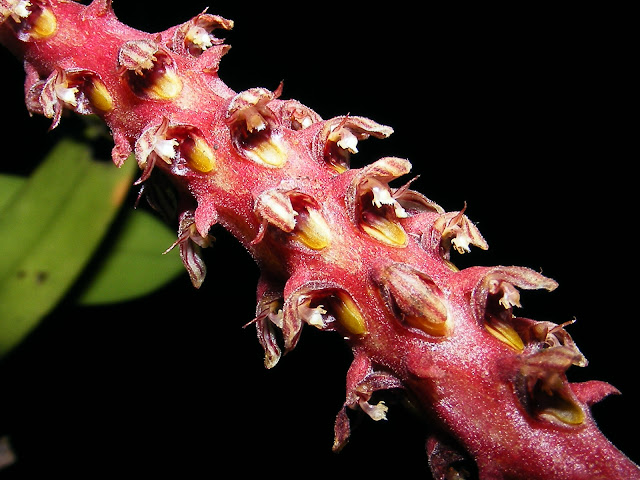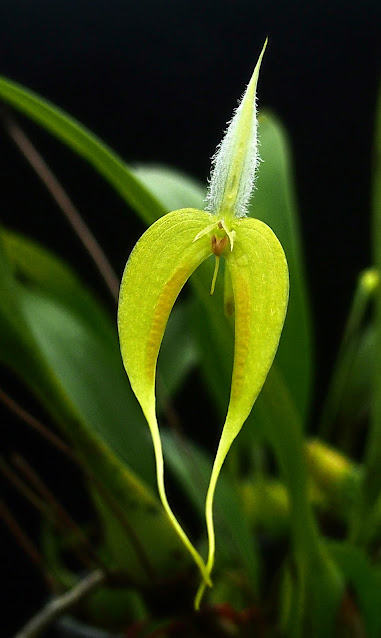"What variety is that?", and why it's a question that doesn't make sense (most of the time).
I frequently see and hear people say "this variety of plant is...", when what they were really wanting to say was "this kind of plant is...". I hear it so much, especially on Youtube videos, that it gives me the impression that these people were only substituting the word 'variety' for 'kind' because they are perhaps assuming that 'variety' is a botanical jargon for 'kind' or 'type'. Even Summer Rayne Oakes, despite her exposure to various botanists from around the world, is still inclined to say "variety", rather than the much more apt 'species'.
Variety
You see, 'variety' in the botanical language does not equate to 'kind' or 'type'. It is a botanical nomenclature ranking. To illustrate: genus-species-subspecies-variety-forma. In the botanical world, the distinction between subspecies and variety is sketchy at best, and one botanist's definition of 'subspecies' may be another botanist's 'variety'. But if you ask me, a subspecies is an entity that differs in some key characters from the nominate subspecies but isn't evolved well enough to be separated from it. A subspecies may form populations separate from the nominate subspecies. Thus, its march towards being a full species is undiluted and unimpeded and such plants may be full species in their own right in perhaps a few hundred or thousands of years from now. What is a nominate subspecies then, you may ask. In 2011, I described Bulbophyllum saurocephalum subsp. oncoglossum, which is instantly recognizable from the nominate subspecies- Bulbophyllum saurocephalum subsp. saurocephalum- by its humped labellum vs flat in subsp. saurocephalum. Just remember: if a plant has a subspecies, then it follows that it also has a nominate subspecies, which was the first to be described and recognized by science. Most people just don't write down or say the admittedly redundant nominate subspecific name, but it's there. A variety, on the other hand, is a plant with minimal differences from the species itself. A good example is Spathoglottis kimballiana var. angustifolia, which differs only from the typical S. kimballiana var. kimballiana in having much narrower leaves. But the floral characters are still the same. Like subspecies, these also may constitute populations of its own, but, as was mentioned above, is minimally different.
 |
| Bulbophyllum saurocephalum subsp. saurocephalum. Note the flat labellum (in yellow). |
Variation
Some weeks ago, veteran Filipino journalist Howie Severino- who had been bitten by the plant bug and is unlikely to ever recover- asked me: what is the difference between variety and variation? My reply was brief, but for the sake of this article, it would perhaps be better if I take the opportunity to dive even deeper.
All plants and animals display variations. No two are exactly alike. So many people are under the notion that a particular plant has to look a certain way, as espoused by everybody who is into plants but are never botanists or have not yet spent enough time observing plants in the wild. Thus, people call a narrow-leaved Alocasia zebrina as 'Alocasia tigrina', even if such a name has never been formally described and recognized (read: it's a bullshit name). Another notorious bunch are the armchair authorities who freely identify monsteras based on character differentiations of their own imaginations. Their concept of Monstera adansonii subsp. laniata is so ridiculously narrow that when shown a plant with slightly different perforation shape or placement, then these automatically become something else- even when it's still a laniata. I do not want to get caught up in details, but one thing that people should remember is this: plants are segregated into species through their reproductive organs. Hence, a flowering plant is determined to be a species based primarily on the characters of its flowers- not its leaves. Ferns are recognized from one another by their spores and spore arrangement- not their fronds. Leaf dimensions, features, and venation help, but reproductive organs still reign supreme. So, two plants which may look entirely different vegetatively may still belong to one and the same species because their floral morphologies are the same. In such cases, one can say that "B is a variant/variation of A". You don't say "B is a variety of A", unless it really is a taxonomical rank variety of that plant.
 |
| "What variety is that?". Technically, that question does not make any sense, because the plant shown here is not a variety, but a subspecies, of Monstera adansonii, as Monstera adansonii subsp. laniata. |
 |
| "What variety is that?". Again, a question that doesn't add up. There are no known varieties of Anthurium watermaliense. |
 |
| "What variety is that?" Now, this one makes sense, as the plant shown here is variety bombacifolium of the species Anthurium pentaphyllum. However, the question is only really sensible if you know that the plant is a variety of something, and not because you are under the impression that the word 'variety' is the same as 'kind' or 'type' in relation to plants. |
But going back to Alocasia zebrina, the so-called 'A. tigrina' is, as far as is currently known, only a narrow-leaved variation of that species. But since both forms are not known to exist side by side in nature, then the narrow-leaved plants are best considered as 'geographic variations' or 'ecotypical variations'. Another good example of geographic variation is seen in Alocasia maquilingensis, where the southern Luzon populations tend to have more hairy petioles than those from the Visayas and Mindanao; the plants from the latter two are not varieties of A. maquilingensis, but variations.
And before I forget, and this ticks me off really often: "var." is an abbreviation of 'variety', NOT 'variegated/variegation'!
 |
| Spathoglottis kimballiana var. angustifolia, a variety that differs from S. kimballiana var. kimballiana only by its narrower leaves, as can gleaned from the varietal name. |






Comments
Post a Comment